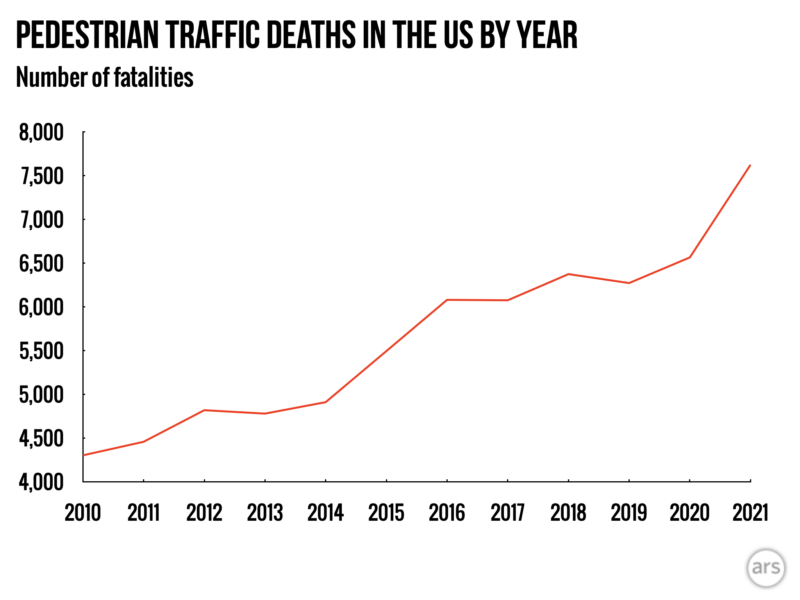How cities can stem the tide of pedestrian deaths from large cars and SUVs

Enlarge / Pedestrian deaths are rising sharply: From 2011 through 2021, annual US pedestrian traffic fatalities increased by 77 percent, from 4,302 to an estimated 7,624. In 2021 pedestrians represented nearly 18 percent of all traffic deaths. (credit: Governors Highway Safety Association/Ars Technica)
Deadly traffic incidents have declined in most developed countries in recent years. But in the US they're becoming more common. Deaths in motor vehicle crashes rose more than 33 percent from 2011 to 2021. Since 2010, pedestrian deaths nationwide have climbed a shocking 77 percent, compared with a 25 percent increase in all other types of traffic fatalities.
Light trucks injure pedestrians more severely than passenger cars in crashes, and the size of cars and trucks sold in the US continues to swell. Some current models, such as the Toyota Rav4, are one-third larger than they were 15 years ago.
Based on my experience researching urban planning and street design for the past three decades, I know that US cities are primarily vehicle-centered rather than human-centered. Rules established in the 1920s govern how people use vehicles in public streets, and other governmental controls tell manufacturers how big those vehicles can be.